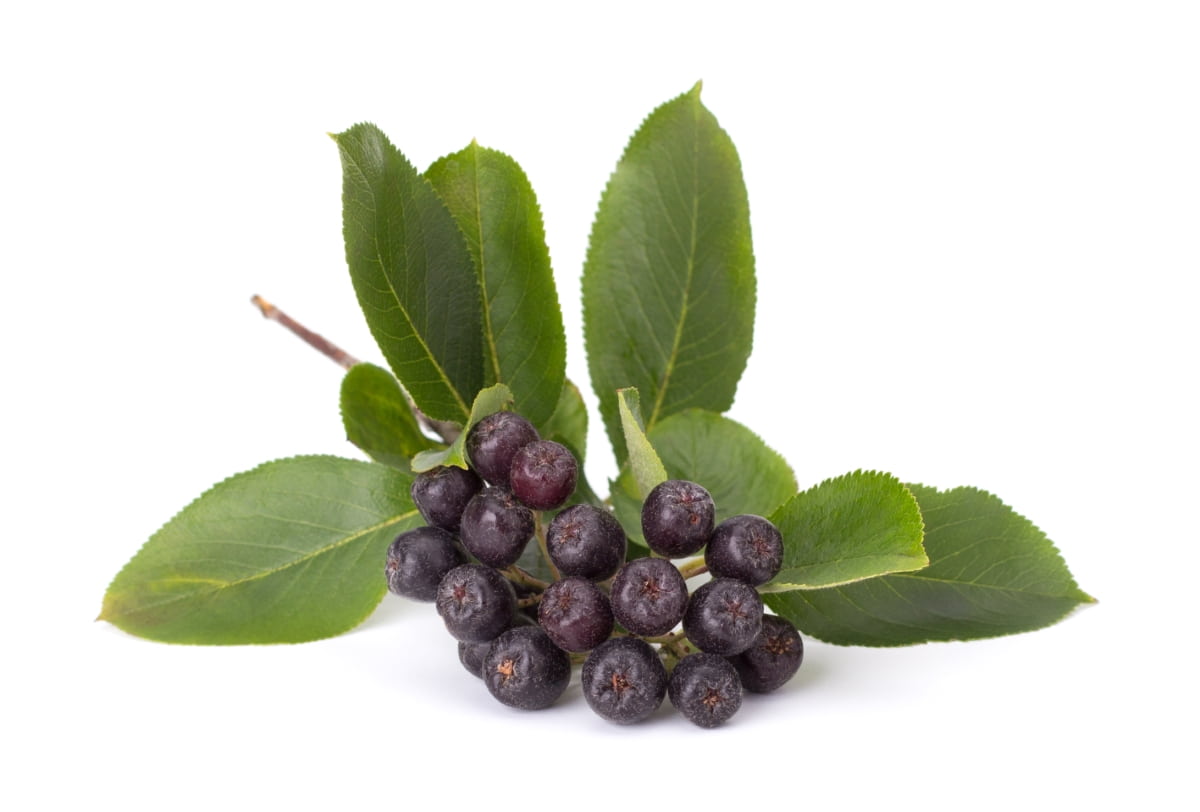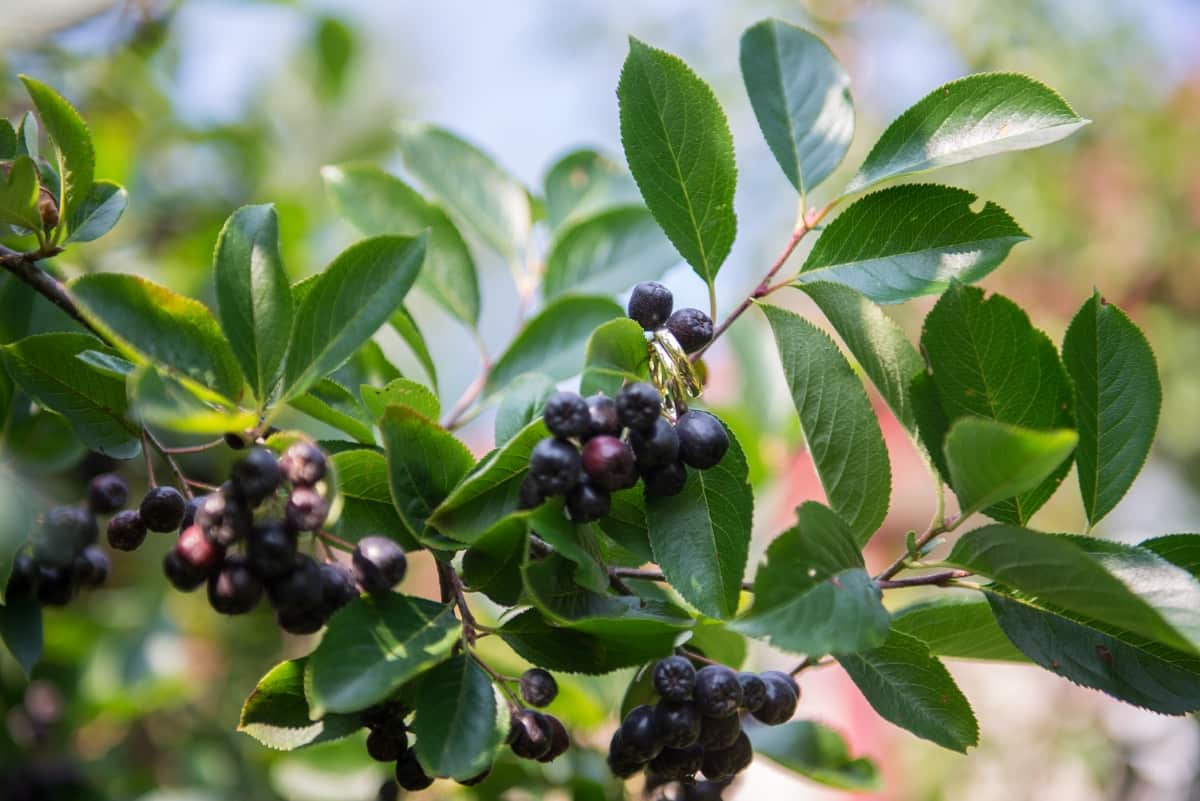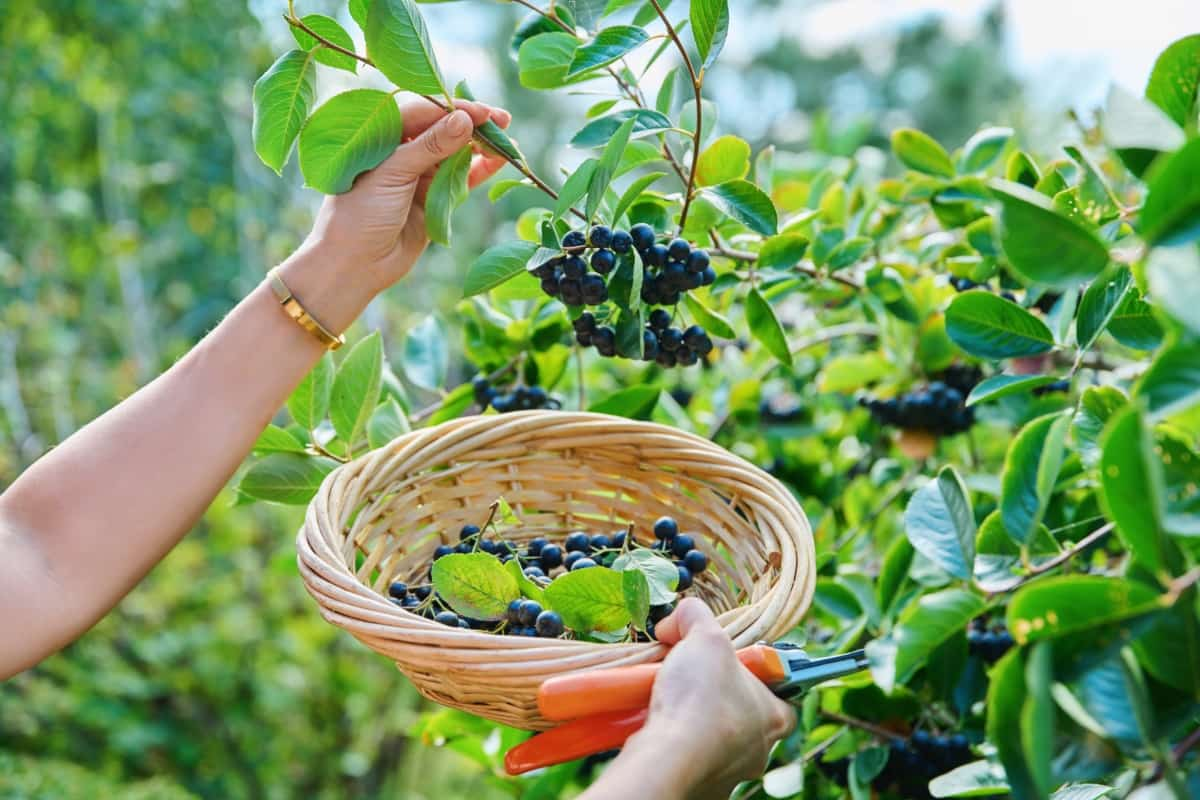Aronia berries are small fruits that pack a powerful punch when it comes to health benefits. Whether you’re looking for a new superfood ingredient or simply want to enhance your garden’s diversity, growing Aronia berries can be a rewarding experience.

Growing Aronia Berries
Health Benefits and Nutritional Value
When it comes to health benefits, Aronia berries are a true powerhouse. These small but mighty fruits are packed with vitamins, minerals, and antioxidants. One of the key nutritional highlights of Aronia berries is their high content of anthocyanins. Anthocyanins have anti-inflammatory properties and may help protect against heart disease and diabetes.
Starting Your Aronia Berry Garden
Selecting the Right Variety
Selecting the right variety of Aronia berries is a crucial step in Aronia Berry Growing. Some popular varieties include Viking, Nero, and McKenzie. Viking is known for its high yields and large fruit size, making it an excellent choice for commercial growers. Nero boasts exceptional disease resistance and produces sweet-tasting berries that are perfect for fresh consumption or juicing. Home gardeners favor McKenzie due to its compact size and abundant crop.
Understanding Your Climate Zone
When it comes to Cultivating Aronia Berries, one of the most crucial factors is understanding your climate zone. Aronia plants thrive in specific temperature ranges and weather conditions, so knowing which zone you are in will help you determine if they can grow successfully in your area.
Each region has its unique climate characteristics that influence plant growth and development. By identifying your climate zone, you can make informed decisions about selecting the right variety of Aronia berries and providing them with optimal growing conditions.
Propagation Methods for Aronia Berries
Growing from Seeds
Growing Aronia berries from seeds is a rewarding and cost-effective way to start your berry garden. When it comes to Aronia Berry Propagation, you’ll need fresh Aronia berry seeds. These can be obtained from ripe berries that have been thoroughly cleaned and dried. It’s important to note that Aronia berries have hard outer shells, so scarification (scratching or nicking) of the seed coat may be necessary for better germination rates.
Start by filling small seed trays or pots with a well-draining potting mix. Plant the Aronia berries seeds about 1/4 inch deep into the soil. Water gently to ensure good moisture penetration without causing waterlogging. Germination typically takes around 3-4 weeks, but it can vary depending on other factors. Once sprouts emerge, provide them with bright light for optimal growth.
Propagating from Cuttings
One of the most effective ways to grow Aronia berries is by propagating them from cuttings. To get started with propagating from cuttings, choose healthy and disease-free stems from mature Aronia plants. Make sure the stem is about 6-8 inches long and has several leaf nodes present. Using sharp pruning shears, make a clean cut just below a node. Next, remove any leaves on the cutting to prevent excess moisture loss through transpiration. Dip the cutting in rooting hormone powder or gel for better root development.
Prepare a pot filled with well-draining soil mix, such as peat moss and perlite. Create holes in the soil using your finger or pencil and insert each cutting about an inch deep into these holes. After planting, water frequently settles the soil around the cuttings and provides the necessary moisture for root establishment. Place the pot in a warm location with indirect sunlight. Check for roots after 4-6 weeks by gently tugging on one of the cuttings. If there is resistance, it means roots have formed successfully.
Soil Preparation and Site Selection
Ideal Soil Conditions
Having the right soil conditions is crucial for the successful growth of Aronia berries. These hardy plants prefer well-draining soil that contains high organic matter. They thrive in a pH between 5.5 to 7. To ensure optimal soil conditions, it’s important to prepare the planting area properly. Start by removing any weeds or grass and loosen the soil with a garden fork. Adding compost or well-rotted manure can greatly enhance the fertility of the soil. Mix it thoroughly into the top few inches to provide a nutritious base for your Aronia plants.
Sunlight and Location Requirements
When it comes to growing Aronia berries, providing the right amount of sunlight is crucial for their growth and productivity. These hardy plants thrive in full sun conditions, which means they need 6 to 8 hours of direct sunlight per day. So, make sure you choose a location that receives ample sunshine throughout the day. In terms of location, Aronia berries can adapt well to various climates but prefer slightly acidic soil. They can tolerate both cold winters and hot summers, making them a great option for many regions.
In case you missed it: The Ultimate Guide to the Top 16 Best Watermelon Varieties

Planting Aronia Berries
Best Time to Plant
When it comes to planting Aronia berries, timing is key. The best time to plant these hardy shrubs is in the early spring or fall when temperatures are mild. Planting during these seasons allows the roots to establish themselves before extreme weather sets in.
Planting Steps and Spacing Guidelines
When it comes to planting Aronia berries, there are a few key steps you need to follow for success. First, prepare the soil by removing any weeds and loosening it with a garden fork. Next, dig a hole that is wide enough to fit the root ball of your Aronia plant. Gently place the plant into the hole, making sure that it sits at the same depth as it was in its container. Spacing is important when planting Aronia berries. Each plant should be spaced about 4-8 feet apart from one another to allow for proper air circulation and growth. This spacing also ensures that each plant has access to adequate sunlight and nutrients from the soil.
Irrigation and Water Management
Watering Frequency and Techniques
Watering is a crucial aspect of growing Aronia berries successfully. In general, Aronia berries require regular watering to maintain consistent moisture in the soil. During the first year after planting, it’s important to keep the soil consistently moist but not waterlogged. This helps establish strong root systems for future growth.
During hot summer months, you may need to increase watering frequency to prevent wilting or stress on the plants. When it comes to watering techniques, it’s best to use a slow and deep irrigation method rather than simply spraying water onto the surface. This allows water to penetrate deeply into the root zone and encourages stronger root development.
Signs of Over or Under-Watering
One telltale sign of over-watering is when the soil remains constantly wet or soggy. This can ultimately cause the plant to wither away. On the other hand, underwatering will result in dry and parched soil, causing leaves to wilt and turn brown.
Fertilizing and Soil Care
Recommended Fertilizers
When it comes to Aronia Berry Fertilization, choosing the right fertilizers can make a world of difference in their growth and productivity. One popular choice among Aronia berry growers is organic fertilizer. These natural options are derived from plant or animal sources and offer a slow release of nutrients that nourish the plants over time.
Soil pH and Nutrient Management
These hardy plants prefer a pH level between 5.5 and 7.0. Once you know the pH level, you can take steps to adjust it if necessary. Before planting, consider incorporating well-rotted manure or compost into the soil to provide a good foundation of organic matter and nutrients. During active growth periods, fertilize with balanced organic fertilizers specifically formulated for fruit-bearing plants.
Pruning and Managing Growth
Pruning Techniques and Timing
By removing dead branches, you can improve airflow and prevent diseases. Additionally, pruning helps shape your plants for aesthetic appeal and makes harvesting easier. When it comes to Aronia Berry Pruning Tips, the best time to prune Aronia bushes is during late winter or early spring while they are still dormant. However, light pruning can also be done in summer after fruiting if necessary.
Training and Shaping Aronia Plants
Training and shaping Aronia plants is an essential part of cultivating healthy and productive bushes. By implementing proper techniques, you can ensure that your plants grow in a well-structured manner, allowing maximum sunlight penetration and air circulation. One common method for training Aronia plants is by utilizing trellises or stakes. This helps to support the branches as they develop and prevents them from drooping or breaking under the weight of the berries. As the plant grows, gently tie the branches to the trellis or stake using soft string or twine.
In case you missed it: Top 10 Best Vegetables to Grow in Raised Beds: Ultimate Guide for Planting to Harvest

Pest and Disease Management
Common Pests and Diseases
One common pest that can affect Aronia berries is the aphid. To control aphids, try using insecticidal soap or introducing natural predators like ladybugs. Another nuisance you may encounter is the spider mite. Regularly misting plants with water can help deter them. When it comes to Aronia Plant Diseases, fungal diseases can also plague Aronia bushes. Proper air circulation through strategic pruning helps prevent these issues, but if they do appear, treat affected areas with a fungicide labeled for use on berries.
Organic and Chemical Control Measures
One approach is the use of organic control measures, which focus on natural solutions that are safe for both the environment and your health. This method involves utilizing beneficial insects to prey on harmful pests like aphids or mites. Another organic option is using botanical extracts derived from plants themselves. Neem oil is the best choice as it acts as an insecticide and fungicide while being non-toxic to humans and animals. It works by disrupting the life cycle of insects, preventing them from reproducing.
Harvesting and Storing Aronia Berries
Indicators of Berry Ripeness
When it comes to harvesting Aronia berries, knowing the right time is crucial. Pay attention to the color of the berries. As they ripen, Aronia berries transition from green or red to a deep dark purple or black hue. The darker the berry, the riper it is likely to be. However, be cautious not to wait too long, as overripe berries may become mushy and lose their flavor.
Harvesting Techniques and Storage Tips
When it comes to harvesting Aronia berries, timing is crucial. These small fruits are ready for picking when they have reached their deep, dark color. It’s important to wait until they are fully ripe before plucking them from the plant. Gently tug on a few berries to see if they easily detach from the stem – this is a good indicator that they’re ready for harvest.
To avoid damaging the delicate berries, use your hands or small garden shears to remove them from the plant carefully. Place them in a shallow container to prevent bruising. Avoid stacking too many layers of berries on top of each other, as this could cause damage.
In case you missed it: Best Berry Plants for Home Gardens: Berry Varieties for Home Gardeners

Conclusion
Growing Aronia berries can be a rewarding and fruitful endeavor. These small but mighty fruits offer numerous health benefits, making them the best addition to any garden or orchard. By selecting the right variety for your climate zone and providing optimal soil conditions, sunlight, and water requirements, Aronia Berry Care you can cultivate thriving Aronia plants.
- How to Grow Hibiscus from Flower
- Plantation Ideas for Home Decoration: A Beginners Guide
- Flower Garden Designs and Layouts for Beginners
- Planting and Spacing Techniques in Papaya: A Beginner’s Guide
- Growing Gold: Essential Techniques for Planting Pineapples
- How to Make Kalanchoe Plant Bushy: Home Remedies and Solutions
- 11 Reasons Why Your Gardenia is Not Blooming: Home Remedies and Solutions
- Eco Elegance: The Guide to Designing a Drought-Tolerant Landscape
- Gardening on a Slope: Strategies for Hillside Landscaping